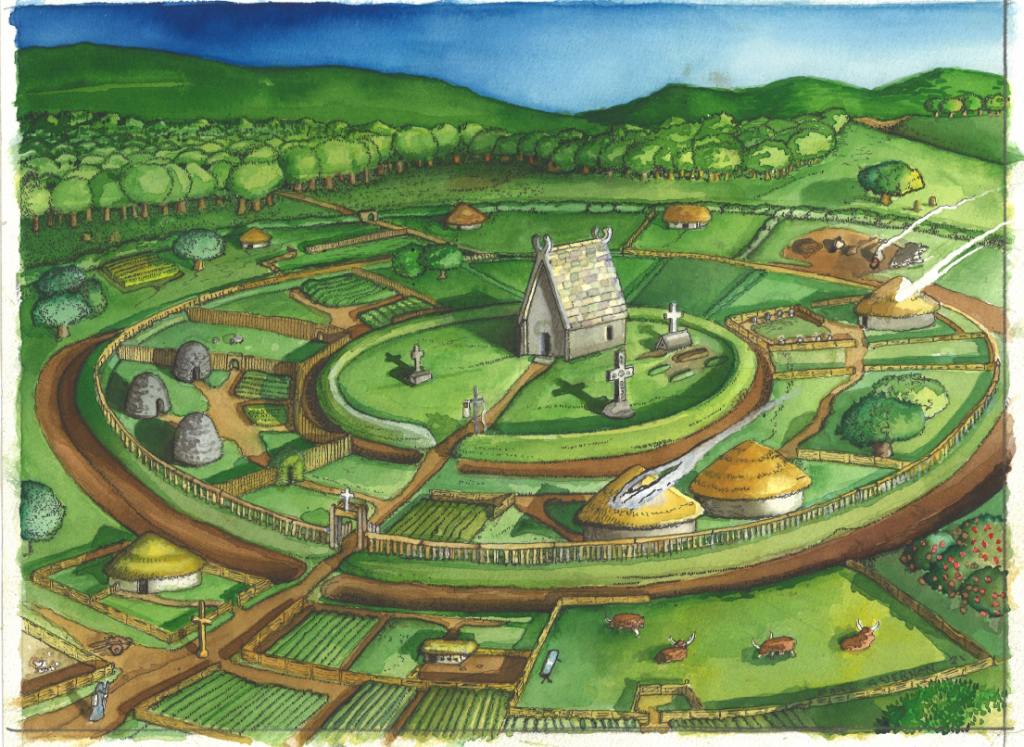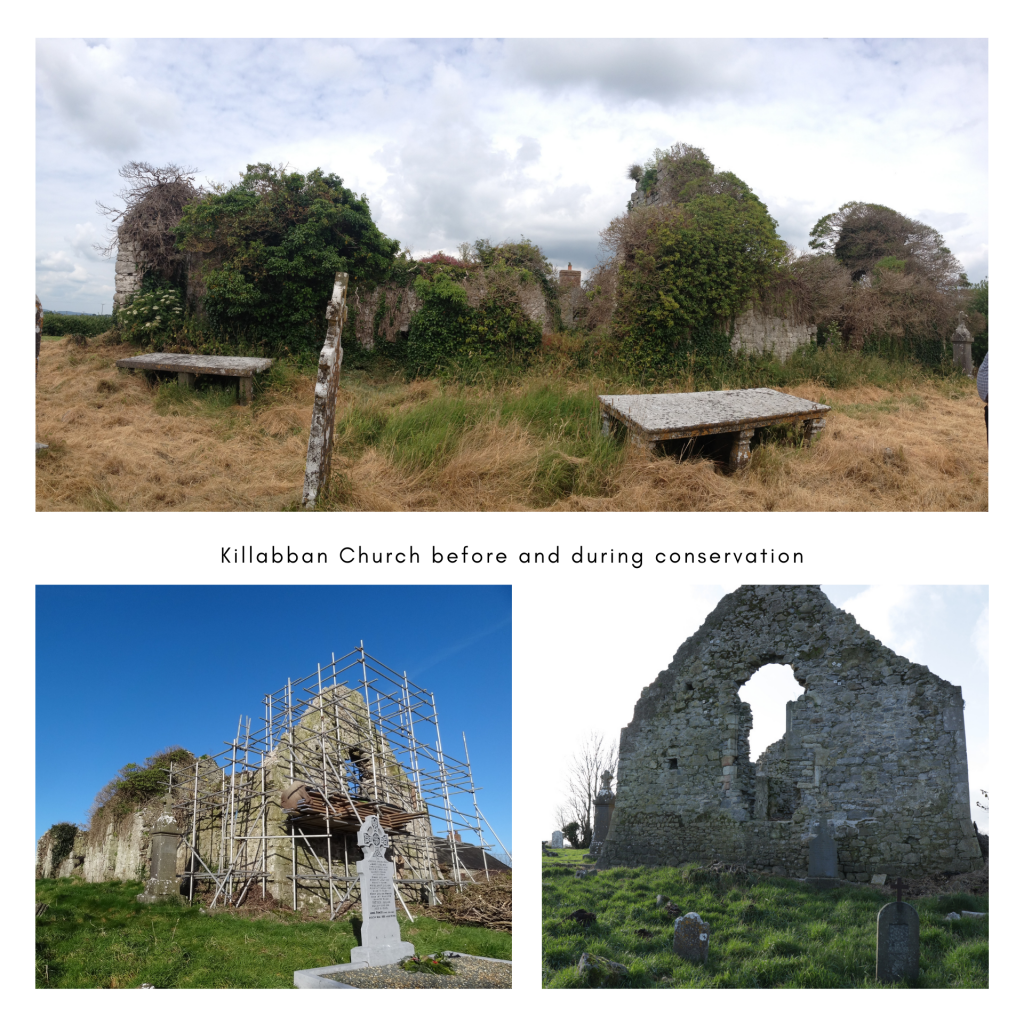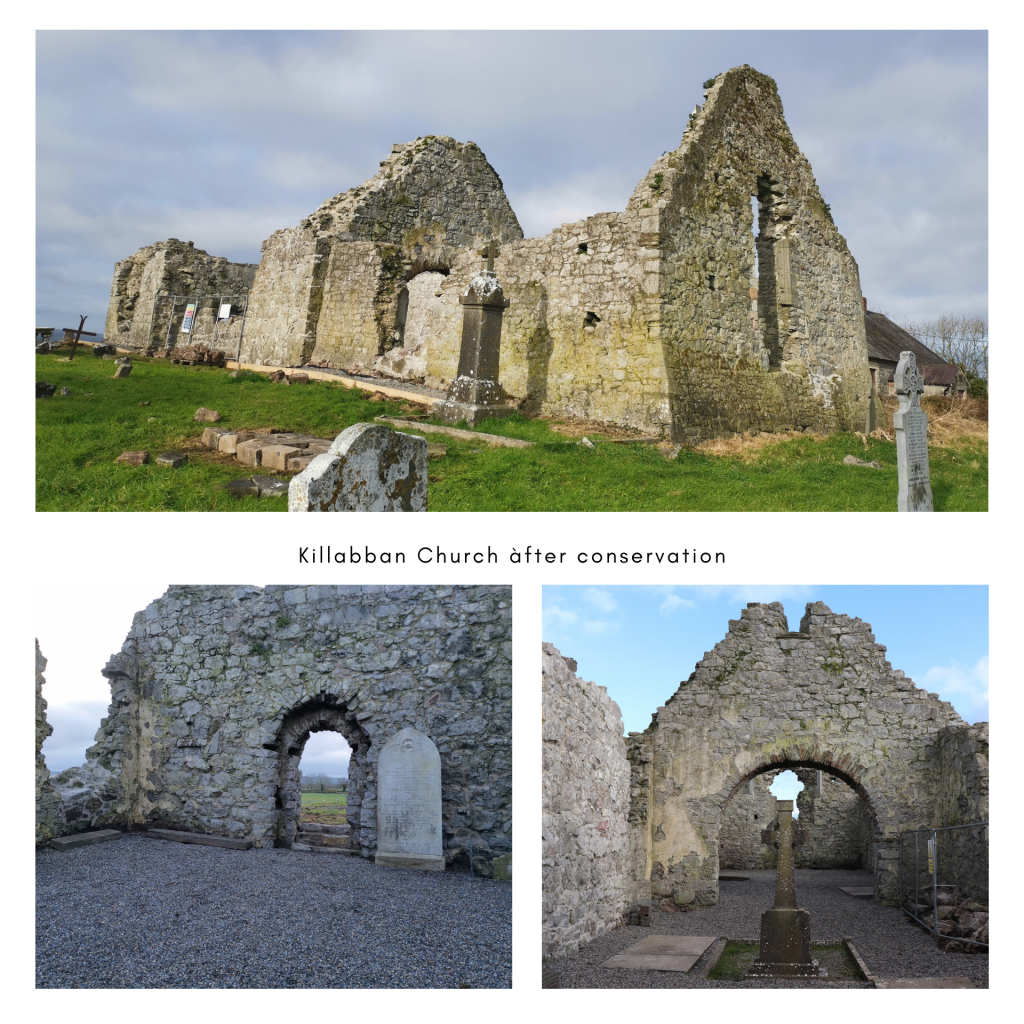Killabban Church Celebration, August 2022
A mass was celebrated in Killabban Church on 25th August 2022 by Bishop Denis Nulty with Fr Padraig Shelley PP. A huge crowd gathered for what was perhaps the first service on the site for hundreds of years, in celebration of the successful completion of conservation works.
The conservation project at Killabban started in 2014 and has been led by the Killabban Monastey Restoration Committee, Liam Delaney and John Moran. The project has been supported by the Heritage Office of Laois County Council with funding from the Heritage Council, Laois County Council, and the Community Monuments Fund of the National Monuments Service, part of the Department of Housing Local Government and Heritage.
Our thanks to the team on the project in particular Aoife Howard of David Kelly Partnership and Colm Flynn Archaeologist, who have been involved since the start. Expert masonry conservation was carried out by Tallis and Company and Rainey Restoration.
Photos by Alf Harvey.
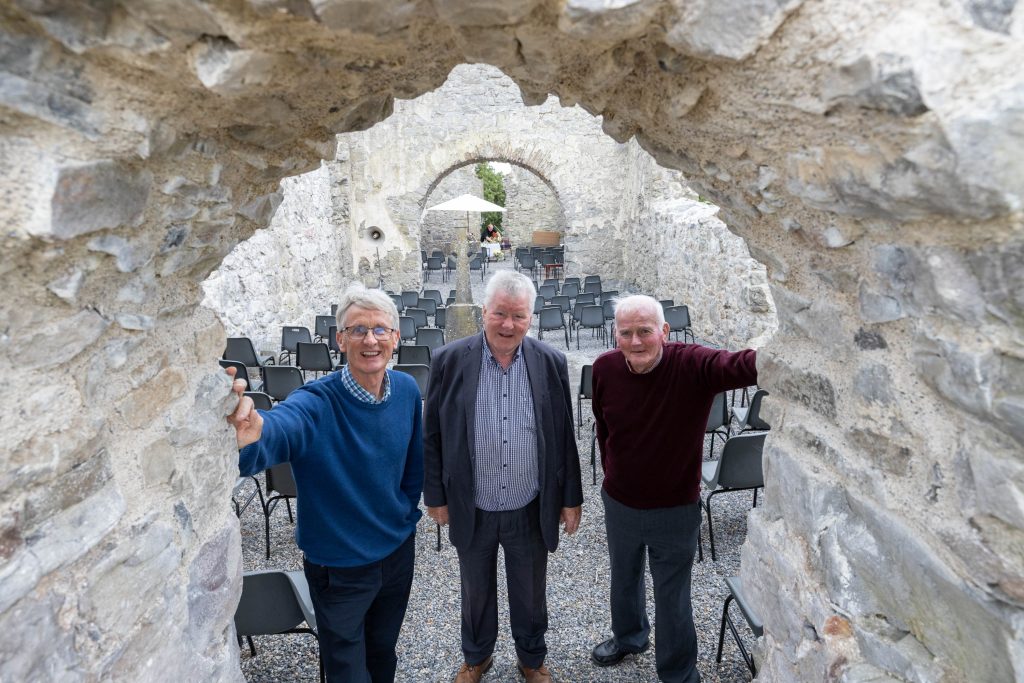
Committee members Liam Delaney, John Moran and Martin McDonald at the Killabban Graveyard Mass.
Picture: Alf Harvey.

96 year old John Byrne who went to school next door pictured at the Killabban Graveyard Mass.
Picture: Alf Harvey.

Shirley Bambrick Carroll with her parents Bridget and John Bambrick at the Killabban Graveyard Mass.
Picture: Alf Harvey.

Interpretive panel at Killabban with artwork by Archaeologist Marc Guernon, supported by the Community Monuments Fund
Picture: Alf Harvey.

Bridget Moran, Mary Dunne and Rosemary Julian looking after the tea at the Killabban Graveyard Mass. Picture: Alf Harvey.
Killabban Graveyard Mass, August 2022. Picture: Alf Harvey.
Killabban Monastic Site
Killabban (from the Gaelic Cill Abáin, meaning ‘Church of Abban’) is the site of an early Christian monastery, founded by St. Abban around the year 650 AD. He is believed to have been part of the Dal Cormaic Luisc family who were a branch of the Ó Caollaidhe (O Kelly) tribe. Stories of St. Abban describe his journey to Rome as a child. From a young age St. Abban was noted for his religious devotion. St Abban’s feast day is celebrated on 16th March.
Life in the monastery
Killabban has been the site of Christian worship for almost 1400 years. St. Abban’s early church would have been a simple wooden rectangular structure, surrounded by circular enclosures formed by ditches with inner banks of earth or stone, some traces of which can be seen in the boundary around the graveyard and the curving indentations still visible in the surrounding fields today. Some monasteries in Ireland contemporary with St. Abban’s monastery had three enclosures; the inner enclosure housed the church and graveyard and perhaps a high cross, the middle enclosure had the settlement buildings and also had space for any industrial activity and scholarly works, and the outer enclosure had farming activities.
Killabban Medieval Settlement
In medieval times Killabban grew to be a thriving town. The Anglo-Normans established a settlement here and by the year 1348 the townspeople (burgesses) were charged 60 shillings per year rent for their burgage (a piece of land owned by the king or lord). A motte – a flat-topped, earthen mound which formed part of an Anglo-Norman wooden castle – stood in the field beside the church at Killabban.
We don’t know why the settlement declined, but the war stemming from the invasion of Ireland by Edward the Bruce in 1315, and the Black Death of 1348, likely had lasting effects. However, the church at Killabban remained in use, and was even extended in the fifteenth and sixteenth centuries.
Killabban Church
The church at Killabban today was built in the medieval period. It’s likely that the nave was built first, before addition of the chancel in the thirteenth century. The chancel was altered in the fifteenth and sixteenth centuries and an ornate window was added to the east gable. The chancel contains fragments of a stone sarcophagus dating to the thirteenth or fourteenth century.
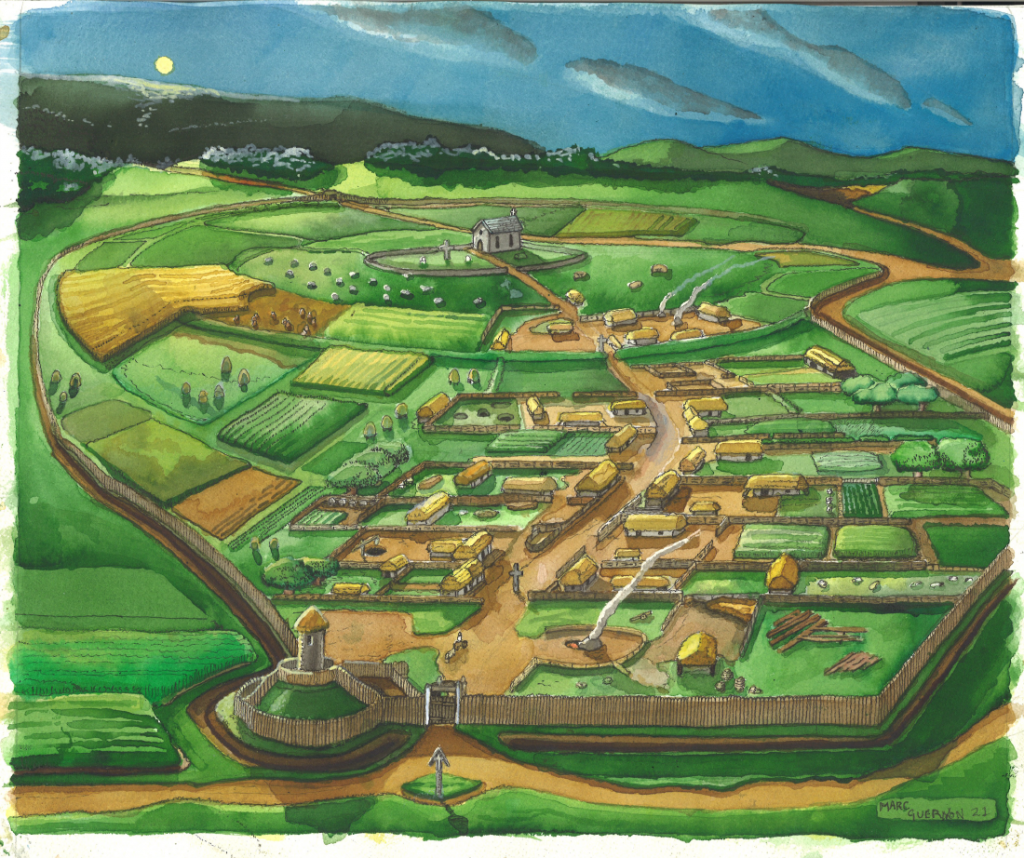
A reconstruction of what the medieval town of Killabban and Norman motte and bailey castle might have looked like, by reconstruction artist Marc Guernon.
Conservation Project
In 2014 the local community came together to address the ivy that was threatening to engulf the church. Conservation of the stonework took place each year until 2021, with support from Laois County Council, the Heritage Council and the National Monuments Service. Conservation by expert stonemasons, engineers and archaeologists means that the church is secure for many years to come.
The project archaeologist was Colm Flynn and the engineer was Aoife Murphy of David Kelly Partnership. Masonry conservation in 2019-21 was carried out by Tallis and Co. of Freshford.
Work commenced in 2015 and a small amount of conservation has been carried out each year since then, with funds from the Portarlington-Graiguecullen MD (supported by Cllr John Moran and Cllr Aisling Moran), from the Heritage Council and from the Community Monuments Fund of the Department of Housing, Local Government and Heritage.
We Are A Community
The story of the community-led conservation project at Killabban was told in a short film created for Heritage Week 2021, see below.
Our sincere thanks to the conservation team for the Killabban project – Aoife Murphy of David Kelly Partnership Chartered Engineers and Colm Flynn Archaeology. Thanks to all who have supported the conservation of Killabban Church, including the Heritage Council, Laois County Council and the Community Monuments Fund of the National Monuments Service and the Department for Housing, Local Government and Heritage.






